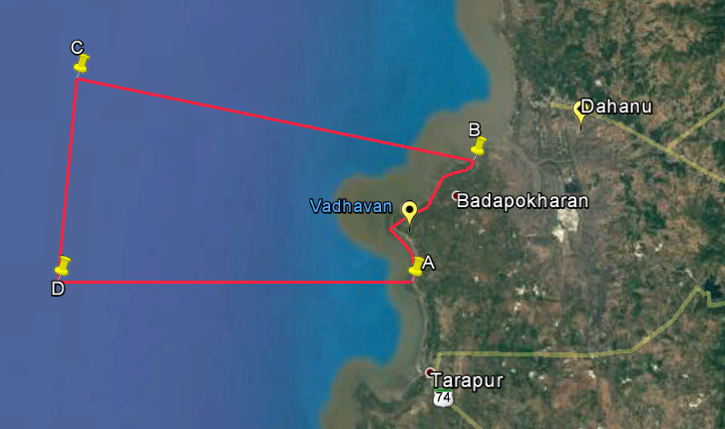
Vadhvan Port project back to square one as Centre seeks fresh studies
MUMBAI : The Union ministry of environment, forests and climate change (MoEFCC) has imposed stricter environmental and social checks on the proposed Vadhvan Port in the Dahanu eco-sensitive zone (ESZ), while bringing the project back to square one in the procedure for obtaining environment clearance. Several preliminary studies will have to be done afresh by the Jawaharlal Nehru Port Authority (JNPA) to assess the project’s environmental and socio-economic impact.
Simultaneously, a ministry committee last month allowed major changes in the project’s architectural specifications, including modifications in the master plan and the source of material to reclaim 1,473 hectares of land from the Arabian Sea.
Instead of quarrying 80 million cubic metres of murrum (fragmented rocks) from seven hillocks in Palghar district, JNPA has sought to dredge 200 million cubic metre of earth from a “borrow pit” off the Daman coast. The Centre in January deferred this request as the project’s “entire scope and configuration has changed”, and instead asked JNPA to revise its pre-feasibility report (PFR).
In addition to various technical assessments, the ministry’s expert appraisal committee (EAC) on ports and harbours has said that “a detailed and additional biodiversity study for the borrow pit region covering monsoon and winter season (considering the sand flats are active breeding areas for fishes and other sand burrowing fauna) should be undertaken by the Zoological Survey of India.”
This study will focus specifically on the movement of offshore marine mammals—cetaceans like dolphins, whales and finless porpoises—and identification of fish aggregation sites, if any, in both Dahanu and Daman. Locals have previously emphasised that the project site is a rich breeding ground for commercially viable fish, including the prized ‘ghol’ (Protonibea diacanthus), India’s most expensive fish which is in high demand from the pharmaceutical industry to make dissolvable surgical stitches.
The Centre has also set aside an earlier Central Marine Fisheries Research Institute study on the port’s impact on local fisherfolk, which estimated that livelihoods of 20,809 fisherfolk from 16 fishing villages within a 10-km radius of the port will be impacted. Now, the environment ministry has asked for “dedicated socio-economic studies with specific focus on fishermen community in Dahanu and Daman region considering large scale sand mining may have an impact on active fishing grounds.”
“JNPA will have to conduct a revised environment impact assessment and management plan. Corals and mangroves in the area will have to be shown under CRZ-IA classification, which was not done in the earlier EIA report. They will have to carry out proper 3-D modelling studies, a detailed traffic study, a cumulative EIA and fresh public hearings in Dahanu and Daman. One hopes that these studies will be done in earnest,” said Debi Goenka, Executive Trustee, Conservation Action Trust and an invitee of the Dahanu Taluka Environment Protection Authority (DTEPA).
The DTEPA had previously criticised various preliminary reports related to the project. In February, Shyam Asolekar (professor of environmental science at IIT-B) and a former member of the DTEPA, panned the poor-quality data in the existing EIA report, calling it “frankly superficial.”
Asolekar also referred to a report by the National Centre for Sustainable Coastal Management (NCSCM), which concluded that “the environmental and ecological impacts of the proposed offshore port facility is rather minimal”, for being based purely on secondary data. “This is a curious report, prepared in two months, has some 20 objectives and uses secondary data. More in depth discussion is required alone on this report,” he had said.
Shortly after his comments, Asolekar, along with Vidyadhar Deshpande (former town planner, Maharashtra) and Kulbushan Jain (professor emeritus, CEPT University, Ahmedabad)—all authority members for over two decades—were removed from the DTEPA by an MoEFCC notification on March 10. All three had raised concerns over the project in February.
A senior JNPA official involved with the project described the EAC’s decision as “positive”, adding, “After the amendments in ToR were deferred twice this year, this is a step forward for the port, which is a project of strategic national importance. Studies will be conducted quickly.”

